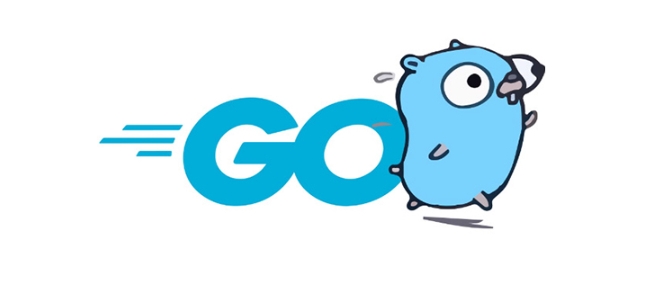Yes, Go code can be compiled into a shared library, but it requires specific steps. To do this properly: 1) Use //export FunctionName comments to expose functions; 2) Write code in the main package with an empty main() function; 3) Import "C" to enable cgo; 4) Build with go build -buildmode=c-shared and provide a compatible C compiler; 5) Be mindful of thread safety, memory management, and runtime overhead when integrating with C programs.

Compiling Go code into a shared library (like a .so file on Linux or .dll/.dylib on other systems) is possible, but it’s not as straightforward as compiling C code. Go isn’t designed primarily for creating shared libraries, but with the right flags and some extra care, you can make it work.

Here’s how to do it properly.
What You Need Before Compiling
Before jumping into the compilation command, there are a few prerequisites:

- Your Go code must be written in a way that exposes functions to external callers using
//exportcomments. - You need to use the
-buildmode=c-sharedflag when building. - You should have
gccor another compatible C compiler installed — Go uses it under the hood to generate the shared object.
Make sure your environment supports CGO since it's required for this build mode.
How to Write Exportable Go Code
To create a shared library, your Go code needs to explicitly mark which functions are exposed to external programs. Here's an example:

package main
import "C"
//export AddNumbers
func AddNumbers(a int, b int) int {
return a b
}
func main() {}A few key points here:
- The package must be
maineven though you're not running it directly. - You import
"C"even if you don't use it directly — it enables cgo. - The
//exportcomment tells the Go toolchain to expose the function. - The
main()function is required, but it can be empty.
This sets up the function AddNumbers so it can be called from C or other languages via the shared library.
Building the Shared Library
Once your code is ready, use this command:
go build -o libmylib.so -buildmode=c-shared main.go
This will produce two files:
libmylib.so— the shared object file.libmylib.h— a C header file describing the exported functions.
You can now use libmylib.so in a C program like this:
#include "libmylib.h"
int main() {
int result = AddNumbers(3, 4);
return 0;
}And compile it with:
gcc main.c -L. -lmylib -o myprogram
Just make sure to link against the Go runtime by including -lmylib.
Things to Watch Out For
There are a few gotchas when working with Go shared libraries:
- Thread safety: Go runtime assumes it manages threads, so calling Go-exported functions from multiple threads in C can lead to issues unless handled carefully.
- Startup overhead: The Go runtime starts up when the first exported function is called, which might affect performance-sensitive applications.
- Cross-compilation: Building shared libraries for different platforms isn’t supported directly. You'll need to set up cross-compilation environments manually.
-
Memory management: Be cautious about passing memory between Go and C — especially strings and slices. Use
C.CStringand similar helpers where needed.
Also, remember that the resulting .so file includes the entire Go runtime, so it can be relatively large compared to a native C library.
Final Notes
Creating a shared library from Go code is definitely doable, but it requires careful handling of exports, linking, and runtime behavior. It works best when you're embedding Go functionality into a larger C/C project or interfacing with tools that expect standard C interfaces.
That’s basically all you need to know to get started.
The above is the detailed content of How to compile Go to a shared library. For more information, please follow other related articles on the PHP Chinese website!

Hot AI Tools

Undress AI Tool
Undress images for free

Undresser.AI Undress
AI-powered app for creating realistic nude photos

AI Clothes Remover
Online AI tool for removing clothes from photos.

Clothoff.io
AI clothes remover

Video Face Swap
Swap faces in any video effortlessly with our completely free AI face swap tool!

Hot Article

Hot Tools

Notepad++7.3.1
Easy-to-use and free code editor

SublimeText3 Chinese version
Chinese version, very easy to use

Zend Studio 13.0.1
Powerful PHP integrated development environment

Dreamweaver CS6
Visual web development tools

SublimeText3 Mac version
God-level code editing software (SublimeText3)

Hot Topics
 How do I call a method on a struct instance in Go?
Jun 24, 2025 pm 03:17 PM
How do I call a method on a struct instance in Go?
Jun 24, 2025 pm 03:17 PM
In Go language, calling a structure method requires first defining the structure and the method that binds the receiver, and accessing it using a point number. After defining the structure Rectangle, the method can be declared through the value receiver or the pointer receiver; 1. Use the value receiver such as func(rRectangle)Area()int and directly call it through rect.Area(); 2. If you need to modify the structure, use the pointer receiver such as func(r*Rectangle)SetWidth(...), and Go will automatically handle the conversion of pointers and values; 3. When embedding the structure, the method of embedded structure will be improved, and it can be called directly through the outer structure; 4. Go does not need to force use getter/setter,
 What are interfaces in Go, and how do I define them?
Jun 22, 2025 pm 03:41 PM
What are interfaces in Go, and how do I define them?
Jun 22, 2025 pm 03:41 PM
In Go, an interface is a type that defines behavior without specifying implementation. An interface consists of method signatures, and any type that implements these methods automatically satisfy the interface. For example, if you define a Speaker interface that contains the Speak() method, all types that implement the method can be considered Speaker. Interfaces are suitable for writing common functions, abstract implementation details, and using mock objects in testing. Defining an interface uses the interface keyword and lists method signatures, without explicitly declaring the type to implement the interface. Common use cases include logs, formatting, abstractions of different databases or services, and notification systems. For example, both Dog and Robot types can implement Speak methods and pass them to the same Anno
 How do I use the time package to work with time and durations in Go?
Jun 23, 2025 pm 11:21 PM
How do I use the time package to work with time and durations in Go?
Jun 23, 2025 pm 11:21 PM
Go's time package provides functions for processing time and duration, including obtaining the current time, formatting date, calculating time difference, processing time zone, scheduling and sleeping operations. To get the current time, use time.Now() to get the Time structure, and you can extract specific time information through Year(), Month(), Day() and other methods; use Format("2006-01-0215:04:05") to format the time string; when calculating the time difference, use Sub() or Since() to obtain the Duration object, and then convert it into the corresponding unit through Seconds(), Minutes(), and Hours();
 How do I use if statements to execute code based on conditions in Go?
Jun 23, 2025 pm 07:02 PM
How do I use if statements to execute code based on conditions in Go?
Jun 23, 2025 pm 07:02 PM
InGo,ifstatementsexecutecodebasedonconditions.1.Basicstructurerunsablockifaconditionistrue,e.g.,ifx>10{...}.2.Elseclausehandlesfalseconditions,e.g.,else{...}.3.Elseifchainsmultipleconditions,e.g.,elseifx==10{...}.4.Variableinitializationinsideif,l
 How does Go support concurrency?
Jun 23, 2025 pm 12:37 PM
How does Go support concurrency?
Jun 23, 2025 pm 12:37 PM
Gohandlesconcurrencyusinggoroutinesandchannels.1.GoroutinesarelightweightfunctionsmanagedbytheGoruntime,enablingthousandstorunconcurrentlywithminimalresourceuse.2.Channelsprovidesafecommunicationbetweengoroutines,allowingvaluestobesentandreceivedinas
 How do I use bitwise operators in Go (&, |, ^, &, )?
Jun 23, 2025 pm 01:57 PM
How do I use bitwise operators in Go (&, |, ^, &, )?
Jun 23, 2025 pm 01:57 PM
Use bit operators to operate specific bits of integers in Go language, suitable for processing flag bits, underlying data, or optimization operations. 1. Use & (bit-wise) to check whether a specific bit is set; 2. Use
 How do I use the Lock() and Unlock() methods to protect a critical section of code in Go?
Jun 23, 2025 pm 08:37 PM
How do I use the Lock() and Unlock() methods to protect a critical section of code in Go?
Jun 23, 2025 pm 08:37 PM
The standard way to protect critical areas in Go is to use the Lock() and Unlock() methods of sync.Mutex. 1. Declare a mutex and use it with the data to be protected; 2. Call Lock() before entering the critical area to ensure that only one goroutine can access the shared resources; 3. Use deferUnlock() to ensure that the lock is always released to avoid deadlocks; 4. Try to shorten operations in the critical area to improve performance; 5. For scenarios where more reads and less writes, sync.RWMutex should be used, read operations through RLock()/RUnlock(), and write operations through Lock()/Unlock() to improve concurrency efficiency.
 What is the switch statement in Go, and how does it work?
Jun 23, 2025 pm 12:25 PM
What is the switch statement in Go, and how does it work?
Jun 23, 2025 pm 12:25 PM
A switch statement in Go is a control flow tool that executes different code blocks based on the value of a variable or expression. 1. Switch executes corresponding logic by matching cases, and does not support the default fall-through; 2. The conditions can be omitted and Boolean expressions are used as case judgment; 3. A case can contain multiple values, separated by commas; 4. Support type judgment (typeswitch), which is used to dynamically check the underlying types of interface variables. This makes switch easier and more efficient than long chain if-else when dealing with multi-condition branches, value grouping and type checking.






